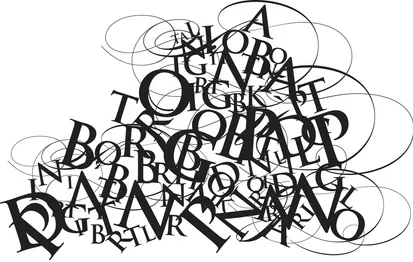Introduction
In the ever-evolving world of technology, new terms and innovations constantly emerge, capturing the attention of professionals, enthusiasts, and the public alike. One such unique term is qwerasdfzxcvtyuighjkbnmopl. While it might initially appear to be just a random sequence of letters, its significance can be examined through various lenses, particularly in the context of technology and its influence on the way we interact with devices and systems. This article delves deep into the applications, implications, and future potential of qwerasdfzxcvtyuighjkbnmopl, focusing on its relevance in modern technological landscapes.
Understanding Qwerasdfzxcvtyughjkbnmopl
At first glance, qwerasdfzxcvtyuighjkbnmopl may seem like a jumble of characters. However, this term represents a conceptual framework for understanding how random sequences, derived from the keyboard, play an important role in fields like data security, algorithmic design, and human-computer interaction. It embodies the increasing complexity and sophistication of modern systems, where randomness and precision are often interwoven to create secure and efficient environments.
In the realm of software engineering and cryptography, the ability to generate secure, unpredictable strings of characters is crucial. Qwerasdfzxcvtyuighjkbnmopl, while a complex string, metaphorically captures the essence of this unpredictability in the technological systems we rely on.
The Role of Qwerasdfzxcvtyuighjkbnmopl in Data Security
One of the most significant applications of qwerasdfzxcvtyuighjkbnmopl lies in the field of data security. Passwords and encryption keys, which often resemble such random sequences, are integral to securing sensitive data. In an age where data breaches and cyber-attacks are on the rise, securing information with unpredictable, complex strings has become a standard practice.
The development of secure algorithms, including those used for password hashing and encryption, relies on the principle of randomness. Systems generate these random strings to ensure that sensitive data remains safe from malicious attacks. The use of random characters, like those found in qwerasdfzxcvtyuighjkbnmopl, exemplifies the lengths to which cybersecurity measures must go to thwart unauthorized access.
Qwerasdfzxcvtyuighjkbnmopl and Human-Computer Interaction
Another area where qwerasdfzxcvtyuighjkbnmopl holds significance is in human-computer interaction (HCI). As computing devices continue to evolve, the way humans engage with technology has also transformed. The keyboard, once the primary interface for input, now coexists with touchscreens, voice commands, and gesture recognition systems.
Yet, the traditional keyboard layout remains a constant in the digital age, and understanding its structure can offer insights into how users interact with systems. The letters in qwerasdfzxcvtyuighjkbnmopl could be seen as a reference to the keyboard’s physical arrangement, which has an inherent psychological impact on users. For instance, the familiar QWERTY layout, despite being suboptimal for efficiency, has become deeply ingrained in our daily lives, affecting everything from typing speed to cognitive patterns.
Qwerasdfzxcvtyuighjkbnmopl in Algorithmic Design
In the realm of algorithmic design, sequences like qwerasdfzxcvtyuighjkbnmopl can be crucial in developing sorting algorithms, machine learning models, and even artificial intelligence. Randomized algorithms rely on unpredictable elements to achieve optimal results in tasks such as searching and sorting, particularly when working with large datasets.
By introducing a sequence that mimics randomness, developers can create algorithms that perform better in real-world applications. For example, algorithms that handle encryption and decryption processes, which often rely on random character strings, are essential to maintaining privacy and security in communication systems.
The Future of Qwerasdfzxcvtyuighjkbnmopl in Advancements
Looking ahead, the concept of qwerasdfzxcvtyuighjkbnmopl—and, by extension, randomization—will likely continue to play a pivotal role in emerging technologies. With the rise of quantum computing, for example, the need for highly secure and unpredictable data encryption methods will only increase. This may lead to further refinement in generating sequences that are even more complex and resilient against attacks.
Moreover, as the Internet of Things (IoT) continues to expand, there will be an even greater need for secure communication between devices. Qwerasdfzxcvtyuighjkbnmopl-like sequences could become a foundational element of secure protocols for ensuring data integrity and privacy across interconnected systems.
Conclusion
The seemingly random string of characters—qwerasdfzxcvtyuighjkbnmopl—holds deep meaning within the realms of cybersecurity, human-computer interaction, and algorithmic design. Through its connection to the unpredictable and secure nature of modern technologies, this term serves as a metaphor for the complexities we face in the digital age. As technology continues to evolve, the importance of secure, efficient, and user-friendly systems will only grow, and concepts like qwerasdfzxcvtyuighjkbnmopl will remain crucial in shaping the future of innovation. Whether in encryption keys, algorithms, or the interaction between humans and computers, the need for precision and security will ensure that random sequences—like qwerasdfzxcvtyuighjkbnmopl—are central to the future of technology.
